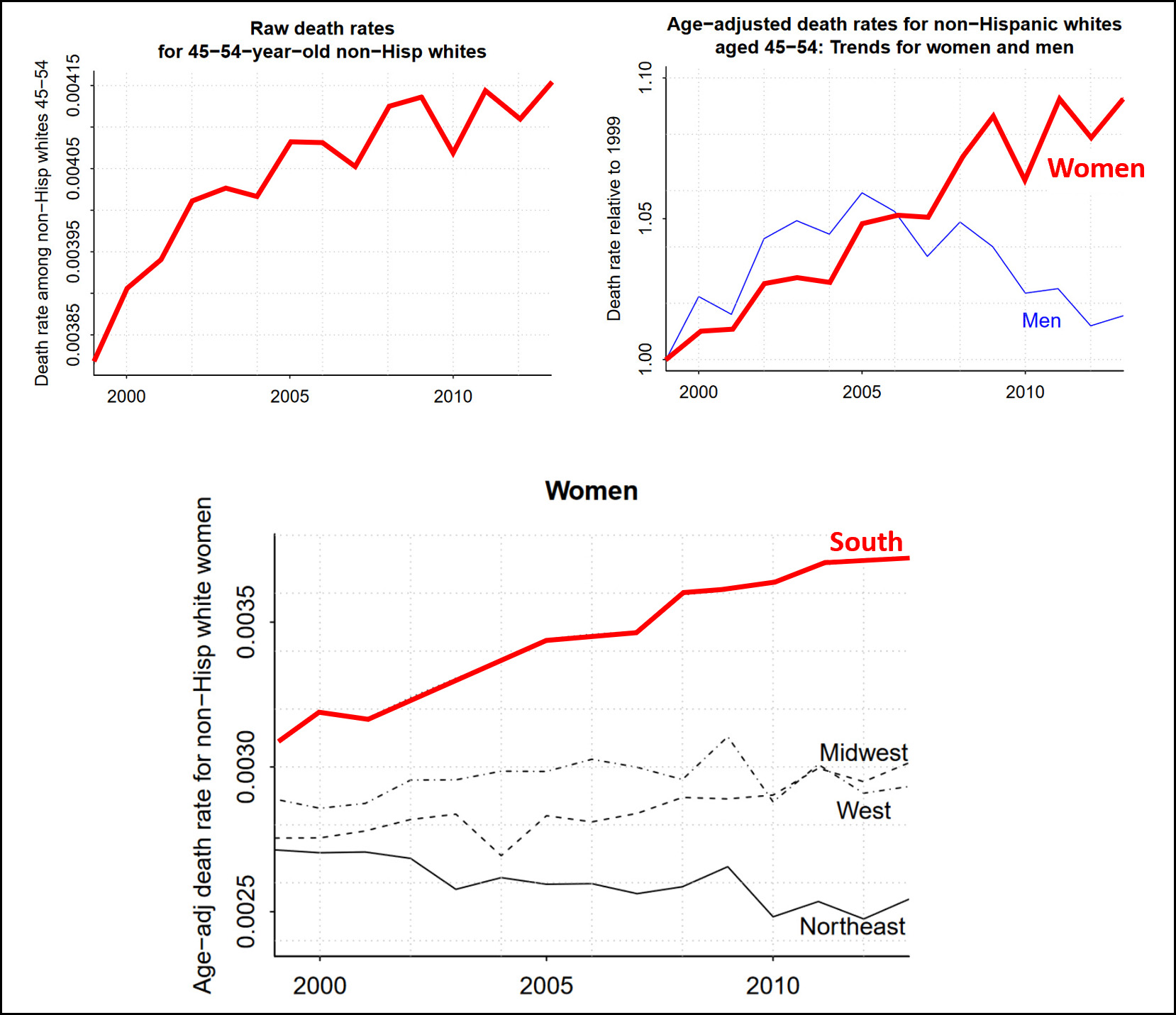A few days ago Nick Kristof and Sheryl WuDunn wrote a piece in the New York Times called “Who Killed the Knapp Family?” The Knapps grew up in Kristof’s hometown of Yamhill, Oregon, and the answer, it turns out, is working class despair:
Of the five Knapp kids who had once been so cheery, Farlan died of liver failure from drink and drugs, Zealan burned to death in a house fire while passed out drunk, Rogena died from hepatitis linked to drug use and Nathan blew himself up cooking meth. Keylan survived partly because he spent 13 years in a state penitentiary.
….Even in this presidential campaign, the unraveling of working-class communities receives little attention. There is talk about the middle class, but very little about the working class; we discuss college access but not the one in seven children who don’t graduate from high school. America is like a boat that is half-capsized, but those partying above water seem oblivious.
It’s easy to see this just by looking at income figures from the Census Bureau. The implosion of working-class prospects led to a complete stagnation of working-class incomes from 2000 to 2017. Here it is by income quintile:

It wasn’t until 2018 that working-class families finally started earning (slightly) more than they had at the beginning of the millennium. That’s a very long drought, and in certain places that lost factories or favored industries things were far worse. Still, with that said, keep this in mind:

I’ve posted this more than once, mainly because no one ever seems to get it: once you run the numbers correctly, death rates have gone up only for middle-aged white women in the South. Men are fine. Blacks and Hispanics are fine. The Northeast is fine. The West and Midwest are fine. Not great, but doing OK.
That’s it. That’s all I have to say. Increased mortality rates due to despair are simply not a national phenomenon. They’ve risen significantly only for one particular demographic group, and we should stop saying otherwise.













